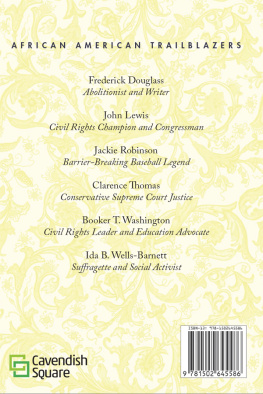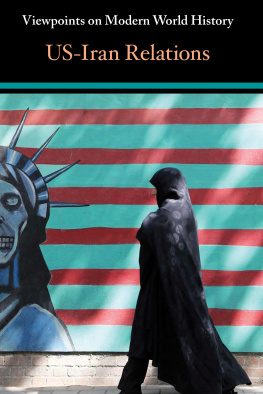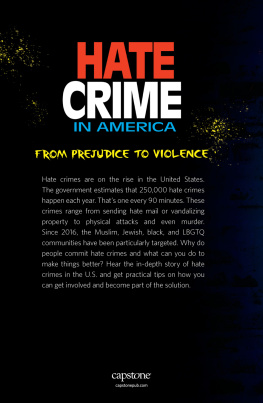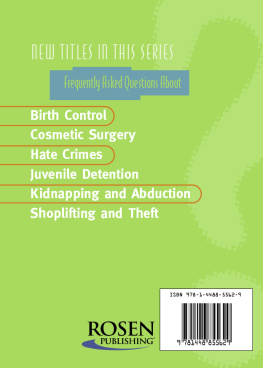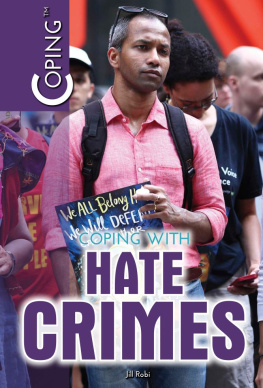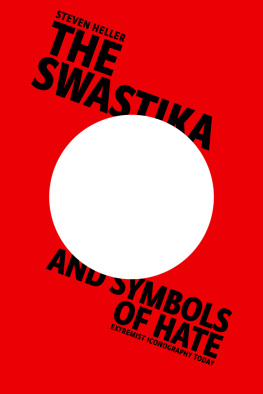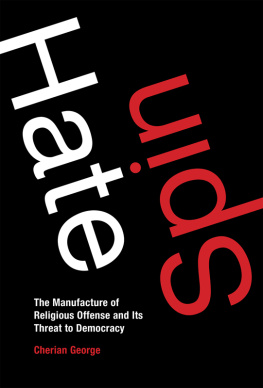Published in 2018 by The Rosen Publishing Group, Inc.
29 East 21st Street, New York, NY 10010
Copyright 2018 by The Rosen Publishing Group, Inc.
First Edition
All rights reserved. No part of this book may be reproduced in any form without permission in writing from the publisher, except by a reviewer.
Library of Congress Cataloging-in-Publication Data
Names: Hurt, Avery Elizabeth, author.
Title: Coping with hate and intolerance / Avery Elizabeth Hurt.
Description: New York: Rosen, 2018 | Series: Coping | Includes bibliographical references and index. | Audience: Grades 7-12.
Identifiers: LCCN 2017017475 | ISBN 9781508176893 (library bound)
| ISBN 9781508178507 (paperback)
Subjects: LCSH: Hate. | Toleration.
Classification: LCC BF575.H3 H87 2018 | DDC 152.4-dc23 LC record available at https://lccn.loc.gov/2017017475
Manufactured in the United States of America
CONTENTS
CHAPTER 1
Why Do We Hate?
CHAPTER 2
Love Always Wins
CHAPTER 3
Virtual Hate
CHAPTER 4
A Brighter Future
INTRODUCTION
I n San Jose, California, a man attacked a Muslim woman and yanked off her headscarf.
A swastika and the words Hitler and Jews live here were painted on the sides of houses in Rindge, New Hampshire.
A white nationalist group distributed fliers in Milford, Connecticut.
In Omaha, Nebraska, a man stole and burned his neighbors gay pride flag.
The words Syrians go home and die were painted on the wall of a school in Calgary, Alberta.
A homeless Latino man was beaten with a baseball bat by a white man yelling racial slurs in San Francisco, California.
Two gay men were brutally beaten in Austin, Texas.
A Muslim high school teacher in Georgia received an anonymous note suggesting that she hang herself with her headscarf.
Bomb threats are called into Jewish community centers across the United States.
Black churches are burned.
Elementary students chant, Build the wall in their lunchrooms.
The number of incidents like these is increasing in the United States according to information collected by the Southern Poverty Law Center, an organization that fights hate and intolerance and tracks both hate crimes and hate incidents. Canada is also experiencing an increase in hatred and intolerance, particularly against Muslims.
But even as intolerance and hatred grow, the response to it grows as well. People are increasingly stepping up and speaking out when they witness these incidents or are victims of them. Individuals stand up and say, Enough is enough," and reach out to help each other. The result of this increase in hate and intolerance is a counter-increaseand a far more powerful one of love and acceptance.
One morning in the winter of 2017, someone phoned a Jewish school in Rockville, Maryland, spewing hate and threatening to blow up the building. The school was quickly evacuated and no one was harmed, but the students, their parents, and the faculty and administration of the school were terribly frightened. Their sense of security and of belonging had been deeply shaken. No longer would they feel that just getting up and going to school was a normal, safe thing to do. But later that day, emails, letters, and phone calls began pouring in to offer support. Religious leaders of all faiths, elected officials, and many, many citizens organized a press conference to condemn the act and demonstrate their support. Rabbi Mitchel Malkus, head of the school, wrote in an opinion piece in the Washington Post, This is what Americans do in difficult times: we stand up for each other.

As you will see in the coming chapters, this is just one of many examples of how people are speaking out about hate and standing up for each other. There are many ways to safely and effectively fight hate and intolerance, whether online or in person, whether you are a bystander or a victim. And when people do confront hate with love and intolerance with acceptance, the world becomes a better place. As Rabbi Malkus wrote, Rather than darkness and hate, a bomb threat brought light and hope for our future as a country"
CHAPTER ONE
Why Do we Hate?
I ts not hard to understand why a person might hate an individual who harmed them in some serious way or is threatening them or their loved oneseven if we cant condone that persons feelings or responses. But why do people often hate others who have done them no harm and pose no threat? Why did Dylann Roof murder nine people in a Bible study group in a Charleston, South Carolina, church? Why did a man shoot fifty-three people at a gay nightclub in Orlando, Florida? Why do school kids taunt and bully their classmates?
Choosinq Sides
Its easy to condemn acts of hate and the attitudes that inspire those acts. But merely condemning hate doesnt do much to stop it. Condemnation without understanding can have the unfortunate result of generating even more hate. We might laugh when we catch ourselves saying something like, I hate haters! Of course, hate and intolerance must be called out and denounced whenever they show up, or they will grow and fester and many more people will be hurt. But to respond effectively, we have to develop some understanding of where hate comes from. Understanding hate is one of the first steps toward eliminating it.

The tendency to categorize people based on superficial characteristics is one of the most dangerous things in the modern worldbut at one time in human history, this knack for quickly sizing people up was a lifesaving skill. Our prehistoric ancestors lived in small tribes and those tribes often competed for resources, such as food and land. People who had a tendency to be a bit cautious around outsiders may well have lived longer than people who were more open and accepting. But in the modern world, sizing people up and assigning them to groups and categories particularly the categories of us and themand making assumptions about what those people are like can lead to hate and intolerance, and in some cases even murder and war.

Belonging to groups like sports teams can give us a sense of belonging, but it can be dangerous if that means discriminating against people who arent in that group.
People have this tendency to discriminate against people who arent part of their group, even when the groups are based on completely meaningless categories. In the 1970s, two social-psychologists, Henri Tajfel and John Turner, developed a framework called Social Identity Theory that helps us understand hate and intolerance. According to Tajfel and Turners research, the groups people belong tosuch as families, sports teams, political parties, and racial groupsare what give people a sense of belonging in the world. In order to make us feel better about ourselves, we tend to inflate the status of the group we are in and devalue the status of other groups. When you think about it, most people do this in small, mostly harmless ways quite often. For example, a fan of the New York Mets baseball team might come to believe that Mets fans are somehow better (or cooler, or nicer) people than fans of the teams archrivals, the New York Yankees; a Yankees fans may feel the same way about Mets fans. These zealous fans identify with their fellow fans and get some of their sense of who they are and how they differ from others based on that identity.




